Nuremberg stands tall |
 |
<<Click to see original |
Nuremberg, Bavaria. There's no other city in the world quite like it. And as Brian Salter discovers, it's where the beauty of medieval Germany comes face to face with the monstrous architecture of Hitler's Third Reich….
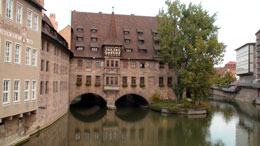
By anyone's measure, Nuremberg is a city of stark contrasts. Located about 170 kilometres north of Munich, it was once the centre of the Holy Roman Empire, a city harking back to the middle ages some 950 years ago. It was the infamous venue for the post World War II trials of German officials involved in the Holocaust. And in common with Dubai, it was the first city in Germany to feature driverless trains on its metro system.
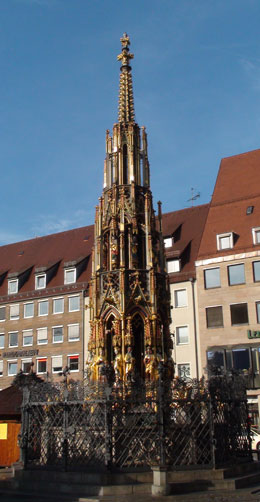
The old quarter is what draws most visitors to Nuremberg today. From 1050 for over 500 years, the city grew dramatically in importance due to its location on key trade routes. It is often referred to as having been the 'unofficial capital' of the Holy Roman Empire, particularly because the ‘Diets’ of Nuremberg, which met in the Castle, were an important part of the administrative structure of the empire. By the 15th and 16th centuries, Nuremberg was the centre of the German Renaissance.
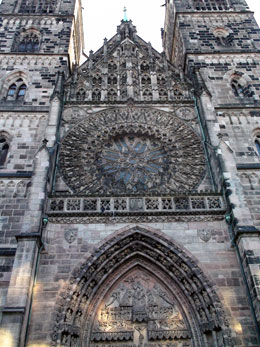
And so it was that Nuremberg was chosen by the Nazi Party as the site of huge conventions – the Nuremberg rallies – held annually between 1927 and 1938; huge state propaganda events, a centre of Nazi ideals. And even today many examples of Nazi architecture are still prominent.
During World War II, Nuremberg and its surroundings was also an important site for military production and as a result it was heavily bombed from 1943-1945. On January 2, 1945, about ninety percent of the medieval city centre was destroyed in only one hour. Despite this, it has been lovingly restored to its pre-war appearance including the reconstruction of many of its medieval buildings. The rebuilt old town, encircled by a 7 km wall, is reason enough to visit the city, let alone attractions such as the traditional Christmas Market, which draws well over a million shoppers each year.
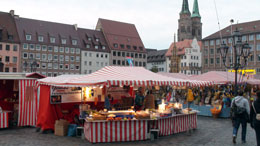
This Christmas Market, which dates back to the 16th century, is probably Germany's most famous. On the Friday before the first Sunday in Advent, the Nuremberg ‘Christmas Angel’, played by a local girl, opens the market with her solemn prologue spoken from the gallery of Our Lady's Church - Nuremberg Cathedral. There are some 180 wooden booths which are deliberately restricted to selling traditional Christmas goods: spicy gingerbread, Zwetschgenmännle (little prune people), Lebkuchen, roast sausages, mulled beverages, toys, Christmas decorations and arts and crafts. The organizers of the fair keep a watchful eye on the tasteful decoration of each hut, and plastic fir garlands, taped Christmas music, and the like are not allowed here. This year it lasts from November 27th until December 24th.
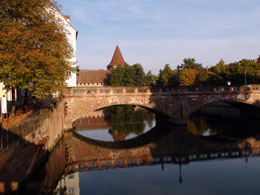
Nuremberg is a modern city with 500,000 inhabitants, and the centre of the European region of Franconia with its 2.5 million inhabitants. Companies such as Siemens and MAN have made their headquarters here whilst you will also find a good third of all German market research agencies.
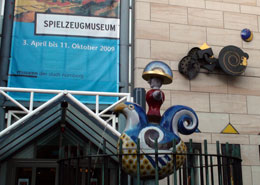
But Nuremberg has always been a toy city of world renown, its tradition stretching from the "Dockenmacher" (doll makers) of mediaeval times to outstanding tin figure manufacturers and numerous tin toy producers in the industrial age, up to the International Toy Fair, the world's most important trade fair of its kind.
Small wonder, then, that of the town's many museums, one of the most popular is the Toy Museum, located in the very heart of the Old Town. Its incredible collection spans from antiquity to the present day, with a strong focus on the past two centuries. Since opening in 1971, the museum has attracted more than four million visitors from all over the world.
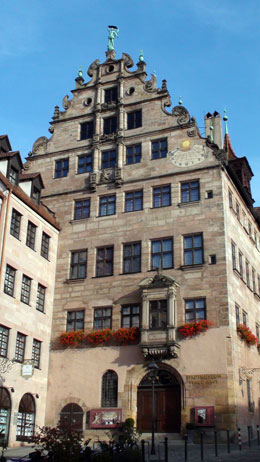
In 1994 the City of Nuremberg incorporated all its museums – some 40 in all - under one controlling umbrella and by the turn of the century, all were re-designed. Reason enough, then, to purchase a "Nűrnberg Card" for 19 Euro (AED103), which not only offers free entrance to all the museums, but also other tourist attractions and free travel on public transport.
{* You can fly to Nuremberg via Munich on Lufthansa from either Abu Dhabi or Dubai for around AED2300 return. Expect to pay upwards of 50 Euro per night for tourist hotels in the old town.}
